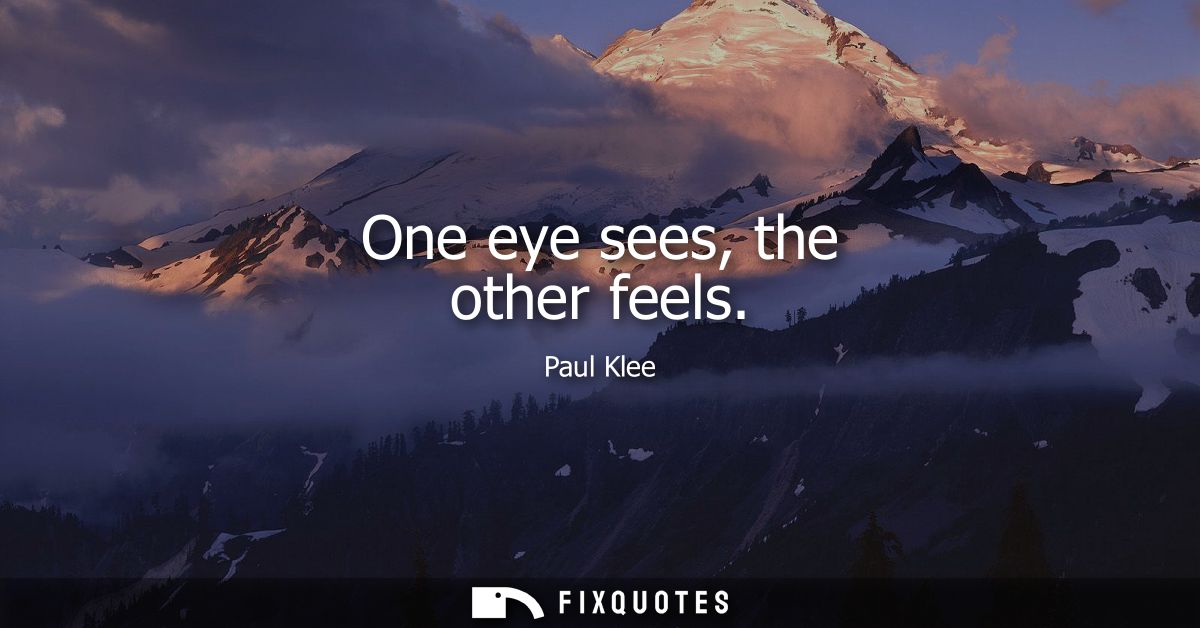"One eye sees, the other feels"
About this Quote
Paul Klee’s aphorism, “One eye sees, the other feels,” subtly encapsulates the tension and harmony between perception and emotion in the creative process. His succinct statement recognizes that the act of engagement with the world, especially for an artist, involves more than objective observation, it also demands an inner participation rooted in sentiment and intuition. On one level, the “seeing” eye alludes to the analytical, discerning aspect of perception, attending to form, color, shape, and external reality. This is the eye of technical skill, of calculated composition and studied control. It documents the world as it exists, collects data, and observes the visible surface.
Yet alongside this is the “feeling” eye, an instrument not just for gathering information but for translating experience into emotional resonance. The feeling eye perceives what lies beneath or beyond appearances: the moods, atmospheres, and ineffable qualities that escape empirical capture. In art, and arguably in life, these two faculties must work together. Without feeling, seeing becomes sterile, a mechanical reproduction without soul. Without seeing, feeling risks becoming untethered, formless, unable to take meaningful structure in material reality. Klee’s insight points to the integration necessary for genuine artistic creation, where observation and intuition fuse, the external world is filtered not just through retina and brain, but through the heart and imagination.
In this dance of dual perception, the artist bridges the outer and inner, producing work that both references reality and transforms it. Art becomes a meeting point between what is and what is experienced, objective analysis and subjective interpretation. Paul Klee, as both painter and theorist, understood that true creativity must honor both faculties, not privileging one at the expense of the other, but allowing each to inform and deepen the other. In doing so, the artist not only records reality, but enlivens it, bestowing on it the warmth and depth that come from feeling as well as from seeing.
About the Author

